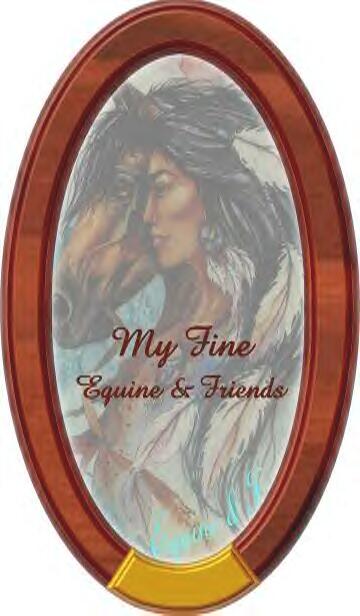Equine Solutions Catalog Page 18

Parasite - Worm CONTROL Naturally
ARTICLES on Naturally Worming on the Lunar Cycle

Equine Solutions Catalog Page 18

Parasite - Worm CONTROL Naturally
ARTICLES on Naturally Worming on the Lunar Cycle

Worming in Harmony with Lunar Cycles
Written by L.A. Pomeroy with C. Edgar Sheaffer, VMD
The practice of worming horses and farm animals in accordance with the lunar cycles is an old tradition that can
offer a surprising degree of success. Moonlight has always been the stuff of poetry, but when it comes to parasites,
it may exercise an attraction that horse owners can use to their advantage.
C. Edgar Sheaffer, VMD, of Clark Veterinary Clinic (www.clarkvetclinic.com) in Palmyra, PA, is a homeopathic veterinarian
who feels that the use of strong, chemical wormers over the past 50 years has taken us out of step with nature.
"In general," Dr. Sheaffer says, "most parasitic conditions can be addressed best with a natural
wormer, used between the new and full moons."
Dr. Sheaffer cites a North American research trial using 14,000 certified organic laying hens, some of which had
heavy worm loads (ascarids, large tape and round worms). The hens were started on a therapeutic treatment for seven
days, beginning on the new moon. "At the end of the trial, there was a 24% reduction in roundworms, and a
90% reduction in tapeworms, using homeopathic plant remedies added to the chickens' drinking water. It appeared,
from this trial, that tapeworms were also more susceptible to herbal wormers than roundworms." Field trials
with horses, he said, suggest a similar pattern.
"The strongyle family of parasites seems to respect the lunar cycle," he says. "I think the female
worm ovulates between the new and full moons. Wormers given at this time may disrupt her egg-laying cycle. So,
if you can disrupt the full, 7- to 14-day, egg-laying cycle, you can disrupt strongyles."
Attention to lunar cycles is also important to fecal samples, Dr. Sheaffer says. "We can't get lulled into
a false sense of security with fecal counts." The most successful assessments collect fecal samples between
the 1st and 15th of the month (from the new-to-full moon phases, when parasite egg-laying is at its peak). Samples
taken between the 15th and 30th of the month may not show eggs because it may not jibe with a parasite egg-laying
cycle. "Daily fecals, and quantitative egg counts could perhaps best document this cycle in an individual
horse."
In addition to planning your worming program between the new and full phases of the moon, Dr. Sheaffer advises
alternating between homeopathic and herbal wormers, used several times a year. "A homeopathic preparation
is one that has been harvested and then soaked in distilled water and grain alcohol before being cold-processed
into a mother tincture. This tincture can then be diluted into the finished, homeopathic product that retains its
medicinal value but reduces the potential side effects of the main ingredients.”
A good rule of thumb is to start a worming program in April with the first spring grass, in harmony with the new-to-full
moon phases. Follow up with a fecal count in May, and treat again if necessary in June. The next worming can be
in October, with a fecal count taken in November, and a re-treatment again in December if necessary.
C. Edgar Sheaffer, VMD, and his wife Bonnie run Clark Veterinary Clinic in Palmyra, PA, Dr. Sheaffer likes is Worm
CLR, manufactured by EquioPathics. Dr. Sheaffer can be reached at 717-838-9563.

Another Lunar Option: In the United Kingdom, traditional worming treatment of farm animals has often followed the
moon cycles. The worming is started two days before a full moon (the moon waxing) and finishes two days after a
full moon (the moon waning), for a total of five days. According to www.equine-natural-health.co.uk, this practice
is still followed in many parts of rural Europe and has demonstrated consistently good results using moon cycles
every second month. (this protocal is what Earth Song Ranch suggests for its Herbal Wormer, if you have a parasite
problem then we would suggest Paratox from the new moon until the full moon when Herbal Wormer would be given for
the 5 nights)
See Salves & Wound Dressings - Go here...![]()

You can contact us by Snail Mail at: